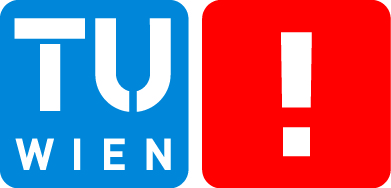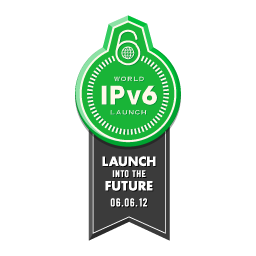|
In information systems the division of a domain into relevant concepts and its formal representation is known as ontology
[1]. The ThinkHome ontology can be seen as basis for the proposed
system. All data has to be stored and provided in a sophisticated way,
supplying the system with needed knowledge. For the storage of
information it was decided to use the Web Ontology Language (OWL),
mainly because of its formal definition and reasoning capabilities.
Furthermore, OWL is one major technology of the so-called Semantic Web.
This additionally supports the openness of the ThinkHome knowledge
representation. Ontology Overview
f
An OWL datastore contains different constructs to create a
formal representation of knowledge. The model, which is similar to a
database scheme in database design, is constructed by concepts and
properties. A concept defines a general idea of a possible item in the
defined knowledge base. For the suggested ThinkHome ontology, such
concepts are for example WeatherState including all data concerning immediate exterior circumstances or HumanActor
describing the group of human system users. In most ontologies
constructed from scratch, it is desired to organize the identified
concepts in a subsumption hierarchy, which means in a
super-class/sub-class connection. Properties are the relations between these concepts and can be differentiated in two kinds: object properties which establish connections between different concepts and datatype properties which connect concepts with values of a specified datatype. The last basic elements which represent the data are individuals.
These are distinct from the conceptual model and act as concrete
instantiations. For example, in the field of building information this
would be a particular wall separating two defined rooms or a specific
window type. In addition to defining simple relations, several
logical restrictions can be put on these basic elements as to create
more complex dependencies. One example would be an anonymous superclass
restriction, which allows membership in a class to be defined through
logically combined properties of a set of individuals. OWL, in the
majority of the cases, is restricted to some form of logic such as
description logics (DL) in order to make it decidable. This means when
DL is enforced, a so-called DL-reasoner (e.g. Pellet [2]) can infer new
information from the ontology. As OWL is an open standard, ontology
reuse as well as integration into other projects is possible. The
vision of ThinkHome is to create a comprehensive knowledge base which
includes all the different concepts needed to realize energy efficient,
intelligent control mechanisms. The knowledge base brings together
different branches of control information which all can be seen as
universe of discourse for the intelligent multi-agent system. The
multi-agent society can subsequently query the facts stored in the
ontology, thus enabling intelligent decision-making. Figure 1 shows the
main branches of the ontology. The division may not be seen as physical
separation of knowledge, but merely as logical segmentation of core
concepts. This domain division is further grouped into
physically independent ontologies. First and foremost the storage
of building information is of great importance, as it
can support optimized control strategies striving for energy-efficient
operation of the smart home. It is not feasible for a user to enter all
these values manually due to the huge effort and lack of knowledge.
Thus, a semi-automatic approach is favored. Therefore, for the ThinkHome
system, the inclusion of data stored in a building information model
(BIM) is considered. Apart from concepts relating to the building,
also information about users and their preferences has
to be considered. Users in this case may be either human users, but
also system agents. The reason for this is that the ontology builds the
foundation of a multi-agent system in which intelligent actors can take
autonomous actions on behalf of human users. For humans, the knowledge
base must know different characteristics (e.g. age, gender) and also
keep a user profile. In the user profile, different preferences of
the users are stored. Predicted future user behavior is
represented in the ontology with the help of habit profiles and
patterns. Hereby, predicted schedules for different occupancy
states are generated (e.g. day, night, weekends, holidays) and
consumption peaks can be anticipated. A building process
is further a concept containing elementary operations that are used to
describe basic actions in the building. It is also very important to
consider exterior influences. These weather and climate
data can be used to infer the proper action and perform tasks most
energy-efficiently. In addition this information can be exploited in
order to guarantee user comfort, for example by natural lighting through
sunlight. In the energy information branch reside
different available energy providers and their trading conditions. This
information is especially valuable when envisioning the integration of
the ThinkHome system into a smart grid, as the ontology can for example
provide the momentarily best option for energy consumption or
recovery. Furthermore, it is important to have an idea of the
provided building automation services, as well as equipment available in
the smart home. This resource information branch
includes white goods, brown goods and automation networks hosting
lighting, shading as well as heating, ventilation and air conditioning
(HVAC) devices. As the automation networks can be of different types,
protocols and manufacturers, it is valuable to present an
abstracted view on facilities in an ontology. This way, their
definition is generalized, which in turn can support the
transparent integration and communication across the different networks.
In addition, energy producers like solar collectors or a thermal heat
pump are stored in this section. Hence, a complete model of the energy
consuming and producing landscape available in the building is depicted
in the knowledge base. · Publications: The following publications developed in the ThinkHome project are related to knowledge bases and ontologies. - Mario J. Kofler and Félix Iglesias Vázquez and Wolfgang Kastner. An Ontology for Representation of User Habits and Building Context in Future Smart Homes. In Proceedings of the 20th Workshop on Intelligent Computing in Engineering (EG-ICE2013), Vienna, Austria, 2013. paper 05. [ bib ] -
Mario J. Kofler and Wolfgang Kastner. Towards an ontology representing
building physics parameters for increased energy efficiency in smart
home operation. In Proceedings of the 2nd Central European Symposium on Building Physic (CESBP2013), Vienna, Austria, 2013. pages 51 -58. [ bib ] -
Wolfgang Kastner, Mario J. Kofler and Christian Reinisch.
Wissensrepräsentation für das adaptive Eigenheim im Kontext von Smart
Cities.Elektrotechnik und Informationstechnik, 129(4):286-292, 2012. [ bib ] -
Mario J. Kofler and Christian Reinisch and Wolfgang Kastner. An
Ontological Weather Representation for Improving Energy-Efficiency in
Interconnected Smart Home Systems. In Proceedings of Applied Simulation and Modelling/Artificial Intelligence and Soft Computing (ASC2012), Napoli, Italy, 2012. pages 256-263. [ bib ] - Mario J.
Kofler, Christian Reinisch, and Wolfgang Kastner. A semantic
representation of energy-related information in future smart homes. Energy and Buildings, 47(0):169 - 179, 2012. [ bib | DOI | http | Abstract ] -
Mario J. Kofler, Christian Reinisch, and Wolfgang Kastner. An
Intelligent Knowledge Representation of Smart Home Energy Parameters. In
Proceedings of the World Renewable Energy Congress (WREC '11),
Linköping, Sweden, May 2011. -Mario J. Kofler and Christian Reinisch and Wolfgang Kastner. A Knowledge
Representation
for Energy Parameters in Sustainable Smart Homes. In Proceedings of
Third International Conference on Applied Energy (ICAE'11), 1065-1078,
2011. - Christian
Reinisch, Mario J. Kofler, Felix Iglesias, and Wolfgang Kastner.
ThinkHome: Energy Efficiency in Future Smart Homes. EURASIP Journal on
Embedded Systems, 2011:18, 2011. [ bib | .pdf ] -
Mario J. Kofler and Wolfgang Kastner. A Knowledge Base for
Energy-Efficient Smart Homes. In Proceedings of the 1st IEEE
Interational Energy Conference (ENERGYCON'10), Manama, Bahrain, December
2010. [ bib ] - Christian Reinisch, Mario J. Kofler, and Wolfgang Kastner. ThinkHome: A
Smart
Home as Digital Ecosystem. In Proceedings of 4th IEEE International
Conference on Digital Ecosystems and Technologies (DEST'10), pages
256-261, April 2010. [ bib | .pdf | Abstract ]
· References: [1]:
T. R. Gruber, “A translation approach to portable ontology
specifications,” Knowledge Acquisition, vol. 5, no. 2, pp. 199–220,
1993. [2]: E. Sirin, B. Parsia, B. Grau, A. Kalyanpur, and Y.
Katz, “Pellet: A practical OWL-DL reasoner,” Web Semantics: Science,
Services and Agents on the World Wide Web, vol. 5, no. 2, pp. 51–53,
2007. |















